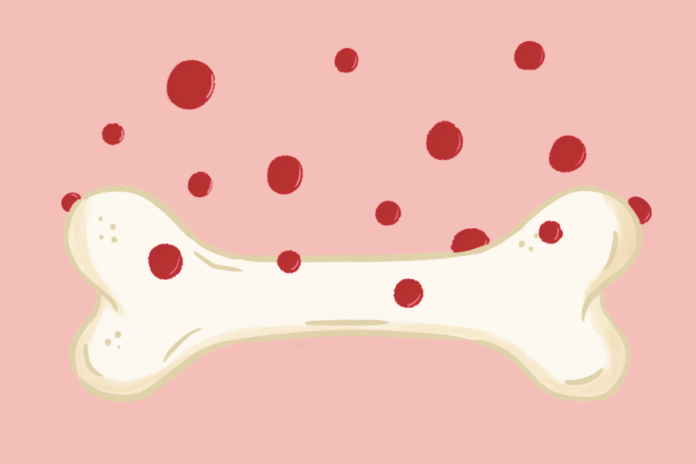UC Davis Health study finds that more bone breakdown predicts shorter lifespan in patients
By LILLY ACKERMAN — science@theaggie.org
A new study from researchers at the UC Davis Comprehensive Cancer Center has shown that increased bone biomarkers are significantly associated with lowered survival for patients with hormone-sensitive prostate cancer (HSPC).
Bone biomarkers are substances that can be seen in urine or blood that indicate the health and activity of bone cells. In the case of prostate cancer, biomarkers can also show signs that the cancer is disrupting bone mass — a common feature of advanced prostate cancer — or that it has spread into a patient’s bones. This makes them a promising area of study within prostate cancer treatment research.
Dr. Primo “Lucky” Lara Jr., the director of the UC Davis Comprehensive Cancer Center and lead author on the study, said that the prevalence and deadliness of prostate cancer is high compared to other cancer types for males in the United States.
“Prostate cancer is the most common cancer diagnosed in men in the United States, accounting for over 288,000 incident cases per year,” Lara Jr. said via email. “It is also the second most common cause of cancer death in men, estimated to account for over 34,000 deaths in the U.S. in 2023.”
Due to the impact that this cancer can have on a patient’s bones, biomarkers for bone breakdown have been previously studied for their ability to assess prognosis (a disease’s likely progression and outcome), and they have been examined in correlation with responses to therapy.
“Bone metastasis is an extremely common event in patients with advanced prostate cancer,” Lara Jr. said. “More than 90% of patients with metastatic prostate cancer will have evidence of skeletal involvement.”
This study focused specifically on biomarkers for bone formation and resorption in advanced or metastatic HSPC patients, looking to see a potential association between disrupted bone turnover and patients’ lifespan.
The HSPC cancer type refers specifically to patients who have recently been diagnosed with advanced or metastatic prostate cancer but have not yet begun treatment. This is an important classification because further bone imbalances are often caused by the typical treatment for HSPC patients, androgen deprivation therapy (ADT).
HSPC survival had not been previously researched for a link with bone biomarkers, unlike castration-resistant prostate cancer (CRPC), for which an association has already been found. CRPC is a form of prostate cancer that continues progressing even after treatment with ADT.
The study analyzed results from a phase III clinical trial for ADT. The researchers looked for four different biomarkers in the HSPC patients: two biomarkers for bone loss, and two for bone formation.
The researchers found that higher levels of the four circulating bone turnover biomarkers were associated with lowered survival rates in the patients they studied.
“Elevated levels of each of the four bone biomarkers […] showed statistically significant association with worse survival outcomes, independent of traditional clinical risk factors,” the study reads.
Due to this strong association between a shorter lifespan and high levels of bone biomarkers in HSPC patients, it could be helpful to know the number of biomarkers in patients. Lara Jr. thinks this knowledge might enhance prognosis and counseling during patient visits, as well as offer important value for future trials. If a patient shows more bone biomarker activity, for instance, they can be prioritized so that a trial is completed faster or so they are treated more effectively for their needs.
“In the future, clinicians and researchers could use bone biomarkers to guide patient counseling and direct future research efforts,” Lara Jr. said. “For example, future early-phase clinical trials can employ this information to identify high-risk groups to screen for new drugs by identifying those with worse prognosis in order to increase the pace of the trial and complete study accrual sooner.”
Written by: Lilly Ackerman — science@theaggie.org




